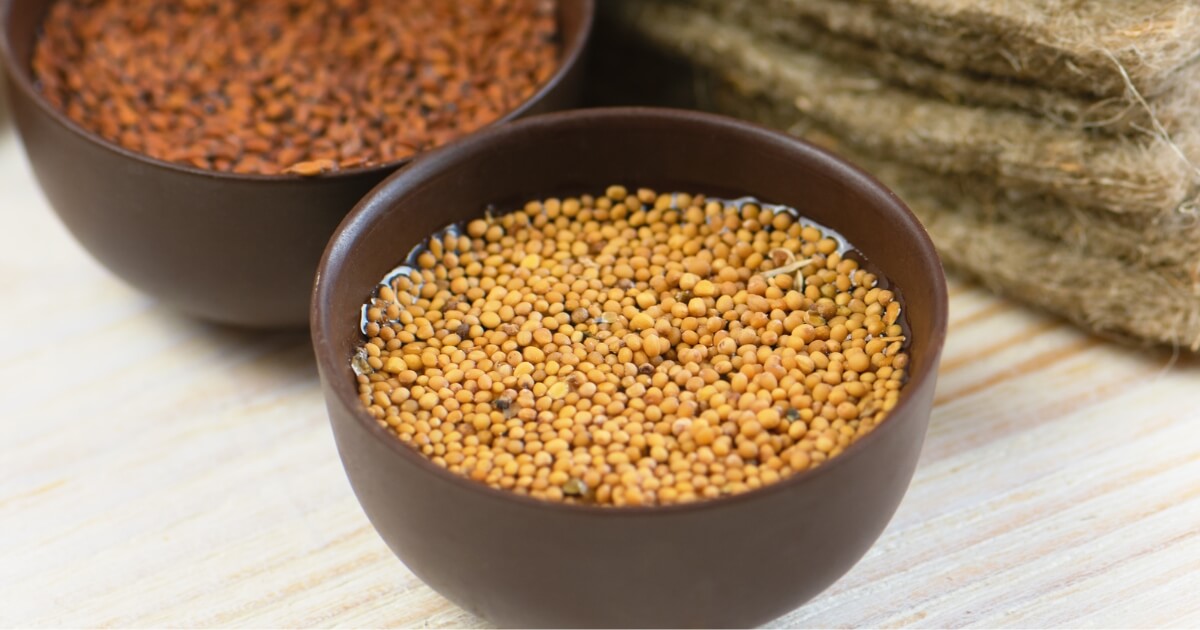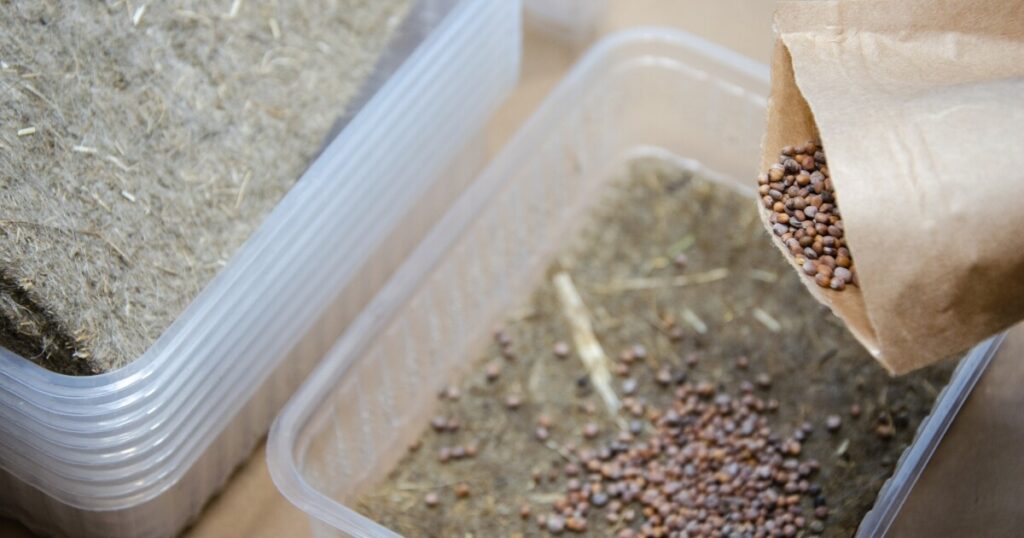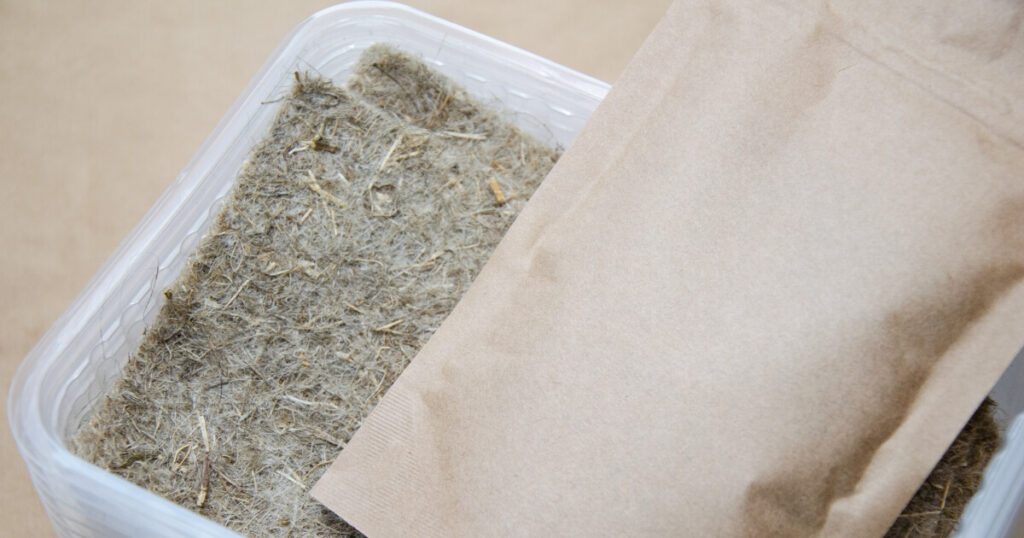Microgreens are sprouting up everywhere—from gourmet restaurant plates to our kitchen windowsills. But are microgreen seeds any different from the regular seeds we plant in our gardens?
Microgreen seeds might be marketed differently, but at their core, they’re the same as regular seeds. In this article, I’ll share my experiences with these little greens and shed some light on what sets their seeds apart.

Microgreen Seeds vs. Regular Seeds: The Main Differences
When it comes to microgreens, the seeds themselves are not some special subcategory of seeds. In fact, they’re scientifically the same as the regular seeds we use in our gardens.
The distinction doesn’t lie in their biology but in how we grow them and how we use them. Here’s a comparison to give you a clearer picture:
Microgreen Seeds:
- Sold in larger quantities for dense growth.
- Selected for traits like flavor and color.
- Fast-growing, harvestable in 1-3 weeks.
- Thrive with just water and light.
- Safe for many varieties, but you need to avoid some, like tomatoes, because of leaf/stem toxins.
- Prefer untreated seeds to avoid consuming chemicals.
Regular Seeds:
- Standard packaging and diverse varieties for full plant growth.
- Growth rate and conditions vary by plant.
- Often require more specific growing conditions.
- Typically consume mature fruits or various edible plant parts.
- Often treated with fungicides or pesticides.
- Selection based on desired plant and garden setup.
Growing Microgreens vs. Regular Seed Planting
Growing microgreens is quick and almost effortless. You simply scatter seeds over soil or a soilless mix in any container you have on hand, water lightly, and give them enough light. You’ll be ready to harvest microgreens within a week or two.
Traditional seed planting requires you to carefully space out your seeds according to their needs, provide room for growth, and wait patiently over weeks or months as they mature into full-sized plants before you can harvest them.

Here are the main differences between growing microgreens and regular seeds:
Growing Microgreens:
- Quick and easy: ready in 1-2 weeks.
- Simple setup: seeds on soil/soilless medium, light misting, ample light.
- Minimal space: ideal for windowsills or small shelves.
- Basic care: mostly consistent moisture and light.
- Harvesting: snip above the soil line when young.
Regular Seed Planting:
- Longer process: weeks to months for maturity.
- Careful spacing: growth room is required.
- More space needed: garden beds or larger containers.
- Diverse care: includes pruning, fertilizing, and pest control.
- Varied harvesting methods: picking fruits, digging up roots, cutting herbs.
From my experience, growing microgreens is still very rewarding if you’re short on time or space. It’s gardening at its most convenient with minimal effort on your part! Plus, there’s something incredibly satisfying about adding homegrown greens to your meals so quickly after planting.
Purchasing Seeds for Microgreens
When you’re ready to jump into growing microgreens, selecting the right seeds is your first step. You don’t necessarily need seeds labeled specifically for microgreens, but here are some tips to guide your selection:
- Quality and Purity: Look for high-quality seeds with a high germination rate. Pure seeds without fillers will give you a uniform crop of microgreens.
- Organic Options: Consider organic seeds if you want to avoid any synthetic chemicals. This is especially important since you’ll eat these greens at a young age.
- Non-Treated Seeds: Make sure the seeds are untreated. No fungicides or pesticides!
- Bulk Quantities: Since you’ll be sowing densely, buying in bulk can be more economical. Many suppliers offer larger packets specifically for microgreen cultivation.
While specialty microgreen seeds aren’t necessary, they can sometimes make your life easier. When harvested young, these are often selected for traits like fast germination, vigorous growth, and exceptional flavor.

They might cost a bit more, but if you’re looking for consistency and performance, they could be worth the extra cost.
Personally, I love tossing radish microgreens into my salads for an extra bite or sprinkling broccoli greens over soups just before serving. I wrote about all my favorite microgreens here, so check it out because you might just find your new favorite garnish!
Quality and Cost Considerations
Quality should be at the forefront of your mind when buying microgreens. After all, you want those tiny greens to be as lush and tasty as possible. Here’s the scoop on quality requirements for successful growth:
- Germination Rate: A high germination rate is key. This means most of the seeds you plant will sprout, leading to a thick mat of microgreens.
- Seed Purity: You’ll want seeds that are clean and free from debris for even growth and minimize the risk of mold or diseases.
- Freshness: Fresh seeds tend to have better germination rates. Check packaging dates or buy from reputable suppliers who turn over their stock regularly.
When it comes to seed costs, comparing microgreen seeds with regular garden seeds can feel like comparing apples and oranges because they’re often used differently:
- Microgreen Seeds: Sold in larger quantities, which might seem pricier at first glance. However, considering you’ll be harvesting these babies early on, you get a lot of bang for your buck.
- Regular Seeds: Typically cheaper per packet since fewer seeds are needed for traditional gardening. But remember, you’re waiting longer for that harvest payoff.
You might be thinking of starting with regular seeds for your microgreens because it can be more cost-effective, especially if you already have some on hand. But if you’re after specific qualities like faster growth or certain flavors, investing in specialized microgreen seeds could make sense despite the higher price tag.
I’ve found that while I might spend a little more upfront on high-quality microgreen seeds, the quick turnaround and sheer volume of greens I get to enjoy make it a worthwhile investment. Plus, there’s no price tag on the joy of snipping fresh greens just steps away from my kitchen!
Clearing Up Myths About Which Seeds To Use
Let’s clear the air on some common misconceptions about microgreen seeds that I’ve seen:
- Special Seeds Required: Many believe you need special seeds to grow microgreens. The truth is any high-quality seed can be used for growing microgreens. The difference lies in how you plant and harvest them, not in the seed itself.
- Microgreen Seeds are Genetically Modified: This is a myth. Microgreen seeds are not genetically engineered to be different. They’re just regular seeds selected for their suitability in producing quick-growing, tasty greens.
- More Nutritious Than Full-Grown Plants: While microgreens are nutrient-dense, it’s not accurate to say they’re always more nutritious than their mature counterparts. Nutrition varies widely across plant species and growth stages.
- Harder to Grow Than Regular Plants: Some folks think microgreens are tricky or require special equipment. In reality, they’re quite beginner-friendly and don’t need much more than a container, soil, water, and light.










